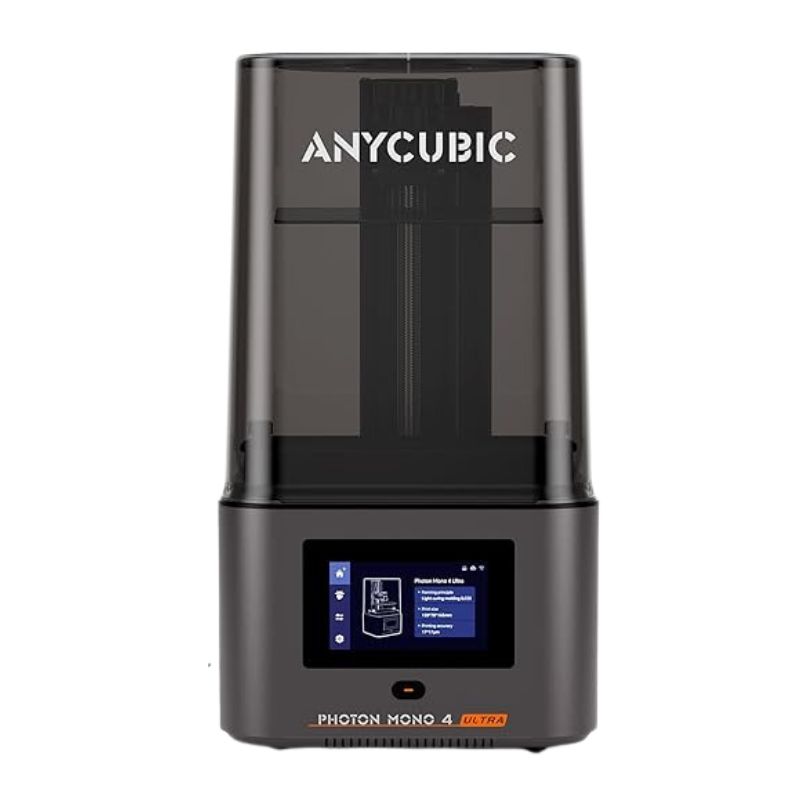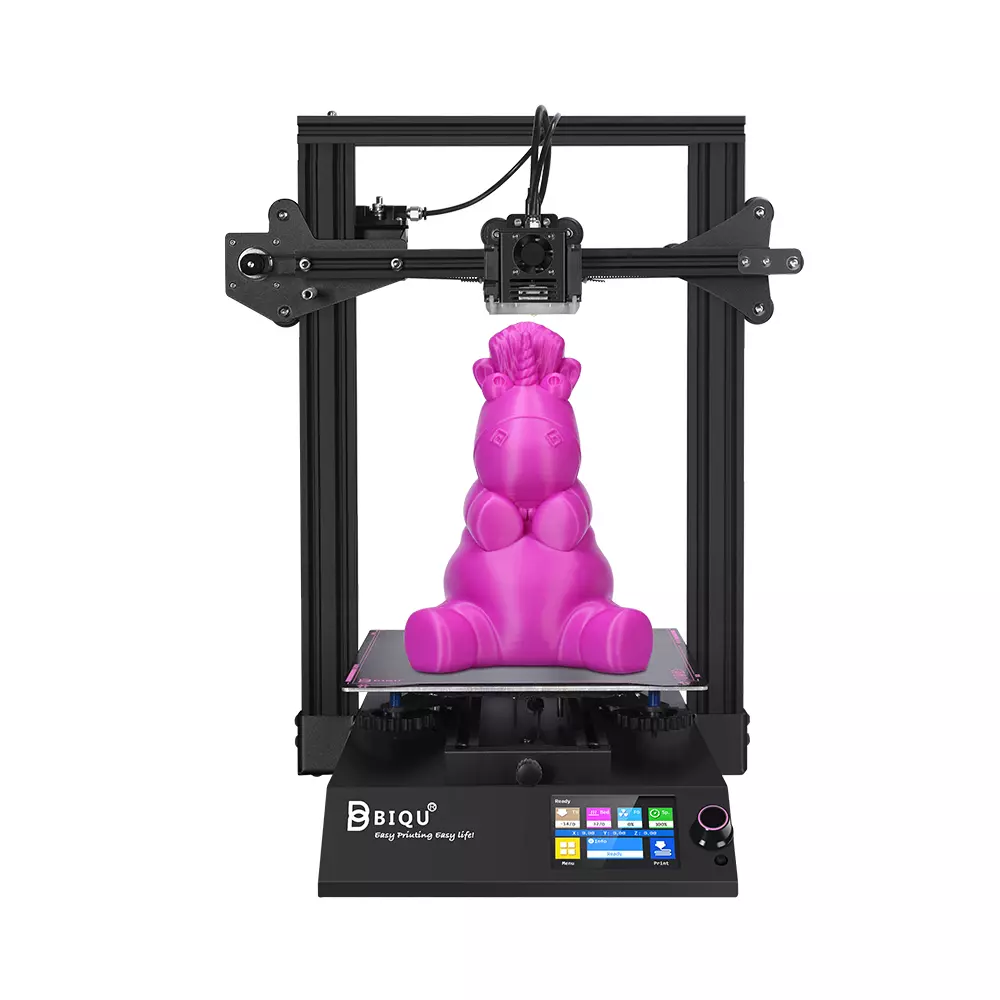Compare Photo Mono 4 Ultra vs BIQU B1
Comparison between the best 3D printers
Choose the best 3D printer at the best price. The cheapest 3D printers are here.
Buy a 3D printer here with 3D Fila.
 |
 |
|
| Model | Photo Mono 4 Ultra[BUY Photo Mono 4 Ultra] |
BIQU B1 |
| Printing Material | Resin | Filament |
| Buy Resin for Anycubic Photo Mono 4 Ultra | Buy Filament forBigTreeTech BIQU B1 | |
| Estimated price | $250,00 | $269,00 |
| Manufacturer | Anycubic | BigTreeTech |
| Release Year | 2024 | 2020 |
| Print Volume [mm] | 153x87x165 | 235x235x270 |
| Printer Size [mm] | 231x236x430 | 412x402x492 |
| Weight [kg] | 5 | 8,00 |
| Power Loss Recovery | NO | YES |
| Maximum Resolution [mm] | 0,01 | 0,1 |
| Processor | 32 Bits BTT SKR V 1.4 | |
| Display | Touchscreen 4.3'' | Touchscreen TFT 3,5'' |
| Power Supply | 24V / 360W | |
| Connectivity | USB | SD / USB |
| Operating systems | Windows, Mac | Windows, Mac, Linux |
| Date of registration in the system | 2024-12-13 | 2021-04-14 |
| Release date | 2024 | 2020 |
| Extra features | The Anycubic Photon Mono 4 Ultra features 10K resolution (9024x5120) with 17x17um pixels and high light uniformity (>=90%) enabled by the COB system with Fresnel lens and uniformity algorithm. It offers a build volume of 153.4x87x165 mm and speeds up to 120 mm/h with high-performance resin. It includes assisted leveling, built-in Wi-Fi, and a redesigned platform for better adhesion and easy model removal. Additionally, it has a print resumption function after power outages, optimizing time and materials. | The BIQU B1 is an advanced 3D printer with a silent 32-bit BTT SKR V1.4 motherboard and ARM Cortex-M3 CPU, offering DIY interfaces (I2C, SPI, WiFi) and dual Z-axis. Its dual BTT B1 TFT35 V3.0 operating system allows real-time monitoring and multiple printing modes, including G-code visualization effects. It stands out for its BIQU SSS (Super Spring Steel), ensuring easy model adhesion and simplified removal, with the possibility of using it on both sides. It includes a filament sensor, automatically pausing printing in case of filament breakage. The multicolored RGB lights integrated into the hotend allow you to view the printing status even at night. Additional notes include the need for a BIQU-specific Type-C cable and extra interfaces for smart filament sensor and BL Touch. |
| Support for multiple colors and materials (AMS and CFS) | NO | NO |
Notes * |
||
| Cost-benefit | 8 / 10 | 7 / 10 |
| Hardware | 6.3 / 10 | 2 / 10 |
| Tela | . | . |
| Print volume | 3 / 10 | 3 / 10 |
| Performance | 9 / 10 | 1 / 10 |
| [BUY Photo Mono 4 Ultra] |
Conclusion |
| In conclusion, when comparing the Anycubic Photo Mono 4 Ultra and the BIQU B1, the differences in technology, features, and design emerge clearly. The Anycubic Photo Mono 4 Ultra stands out with its advanced 10K resolution, high light uniformity, and impressive build quality. Its compact print volume may be limiting for larger projects, but it compensates with features like assisted leveling, built-in Wi-Fi, and effective power loss recovery. This printer is especially suited for users focused on high-detail resin printing and who prioritize precision and speed. On the other hand, the BIQU B1 offers a more robust print volume and a versatile design that accommodates a variety of projects. Its dual Z-axis and advanced motherboard provide excellent control over the printing process, while features such as a filament sensor and colorful indicator lights enhance user experience. However, the BIQU B1's hardware rating and performance aspects don’t measure up to those of the Anycubic model, tending to favor users who are looking for a reliable and user-friendly option rather than cutting-edge performance. While both printers have power loss recovery and support various operating systems, the cost-to-benefit analysis suggests that the Anycubic Photo Mono 4 Ultra offers a superior value proposition in terms of performance and print quality. Thus, for users who prioritize precision and the latest advancements in 3D printing technology, the Anycubic model is the more compelling choice. Conversely, those needing a more spacious build volume and straightforward functionality may find the BIQU B1 a practical alternative despite its lesser performance metrics. |

